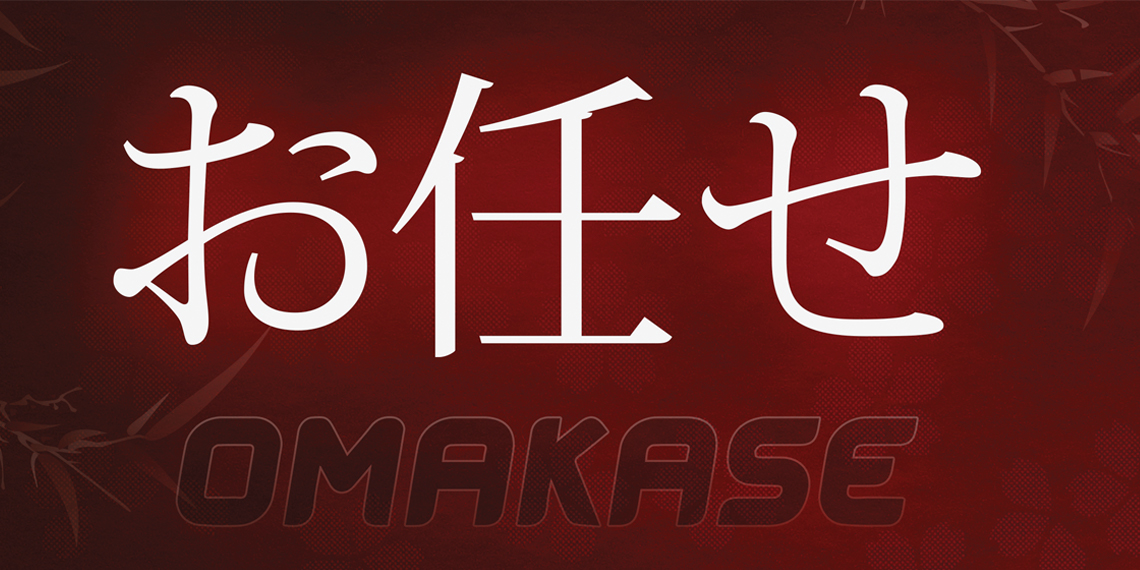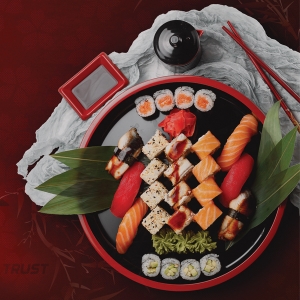
 makase, as I’m sure you’ve gathered already, is a Japanese term used in an American context most frequently at sushi restaurants. The word itself roughly means “I’ll leave it up to [ the chef ]”, essentially giving the chef permission to decide what you are going to eat. Instead of selecting what you are going to eat, you entrust the chef to make that decision for you. This allows the chef to be able to select the best dish for you, based on several factors.
makase, as I’m sure you’ve gathered already, is a Japanese term used in an American context most frequently at sushi restaurants. The word itself roughly means “I’ll leave it up to [ the chef ]”, essentially giving the chef permission to decide what you are going to eat. Instead of selecting what you are going to eat, you entrust the chef to make that decision for you. This allows the chef to be able to select the best dish for you, based on several factors.
 he first main reason to do this is to allow the chef to choose from the best available ingredients. He knows which ingredients are fresh or local, and which ones are not. It also allows the chef to combine their knowledge of their craft along with what they know about their customer. This makes it possible for the skilled chef to develop a personalized menu that suits the taste of an individual.
he first main reason to do this is to allow the chef to choose from the best available ingredients. He knows which ingredients are fresh or local, and which ones are not. It also allows the chef to combine their knowledge of their craft along with what they know about their customer. This makes it possible for the skilled chef to develop a personalized menu that suits the taste of an individual.
There are, of course, downsides to this. As you may have guessed, this isn’t for the budget-minded. If you want the cheapest possible option, you don’t ask the chef to choose for you. If you want them to pick, they get to pick. If you’re going to be frugal about it, you need to choose for yourself. The other downside is getting something that you don’t like. Since the purpose of this is to get you to try something you wouldn’t have otherwise selected, there is always going to be the risk that you get something you don’t really like. The chef, however good they are, can never prevent this while still making sure to give you a unique experience.
This concept doesn’t work everywhere. If you try it in larger places, or chains, you may get a funny look and that’s about it. You don’t expect to get this kind of personal interaction with the chef at those kinds of places, and they aren’t equipped to handle it. Those places may not even necessarily have ‘chefs’ so much as ‘order takers’. They can deal with the easy, order-off-the menu interaction, and that’s about it.
So, if we pause here for a moment and go back, and replace the idea of a ‘sushi restaurant’ with that of an ‘optical shop’, how well does that work? If the customer comes to your shop and wants to ‘order off the menu’ - then do they need your shop? How likely is that customer going to be to try and order their eyewear online if they already know what they want? It’s the experienced chef that helps the customer break out of this mindset of going with the ‘same old thing’ and finding something new. Getting closely involved in what the customer gets is how you keep the customer. This is true not only for styling frames, but also selecting lens designs. You need to get into their head to see what they are going to be using the eyewear for, and pick the lens that is going to give them the best results. Sure, they might end up with something that they don’t like, but that’s okay. You aren’t always going to make a recommendation correctly every single time - but since you’ve developed a good relationship with your customer, it’s easy to change them into a different lens design after you get feedback about what they didn’t like. This kind of personal service is what allows you to be a step above. Many shops (especially online) only offer one progressive lens design. They just tell the patient to wear it until they get used to it, hoping they won’t come back with a complaint because the shop has nothing else to switch them to. If you have a wide range of lens designs, you give yourself the ability to choose exactly the right lens for the patient.
This is probably most obvious, however, when it comes to frame choices. You are going to know your frame options a whole lot better than the person that just walked in and started trying things on. If you are able to learn about what they like - colors, styles, brands, etc. - you are well equipped to be able to make recommendations for them that they may not have otherwise tried on. Or maybe you find they like a particular color that you don’t happen to have on the board, but you can order it. Sometimes they may even know exactly what brand, shape, and style they want, depending on what movie they just watched. While you may not have the specific thing they want, this can at least give you a better idea of how you can match what you do have with what they want. I know that this should seem obvious, but it goes a long way to creating that unique value that you can offer. This goes doubly so for when you choose to not serve certain things – you are the one making the decision about what to not even show the customer, as you know they won’t like it, or it won’t give a good look for them.
Your ability to fit eyewear is probably the most important advantage that you have over all the other ways someone can get eyewear. Not only picking the frame, but properly adjusting it. This is one of the most noticeable things that you can offer that will bring the experience of your customer to the next level. Being able to adjust and fit frames not only makes them look better, but also feel better. When they buy something off the shelf, or online, or wherever else, they pretty much expect a ‘good enough’ fit. Frames may slide, or wobble, or whatever else. When they get them from you, you make sure they are fit perfectly, because that is what allows you to put the ‘special touch’ into your craft.
This philosophy extends beyond eyewear - it holds true for the eye exam as well. At that point, the doctor becomes the one that is being trusted by the patient. Naturally, there’s some deference and respect there due to being in a patient/doctor situation (at least, there should be), so establishing trust there should be relatively easy. The problem here is not establishing trust, so much as it is about establishing your ability. With the prevalence of online vision tests, the patient in your chair is going to be very confused as to what you can do that they can’t get done online.
 The constant confusion about how an ‘online refraction’ differs from a ‘comprehensive eye exam’ doesn’t really help.
The constant confusion about how an ‘online refraction’ differs from a ‘comprehensive eye exam’ doesn’t really help.
You may find yourself needing to explain how the two are in no way comparable, and test for vastly different things. Being able to educate them about the range of tests that you are able to conduct that they can’t get done online is important, as it helps establish your credibility with the patient. If you want them to put value in what you are serving up, then they need to understand why you are doing these things, and how it adds value to them.
Omakase uses trust and personal relationships to allow for an enjoyable, unique experience for the customer. It isn’t just about ‘eating to not be hungry’, similar to how it isn’t about ‘getting glasses to see’. It’s about enjoying the experience and finding something new that you may not have otherwise tried out. When it comes to fashion and lenses, there are so many combinations for every possible customer that there is no way they could try them all to find what they like best. Being able to help them expand their optical horizons is how you can add a superior level of value to what you do, and give them another reason to keep coming back.
-Ming Tsai
